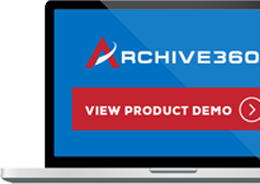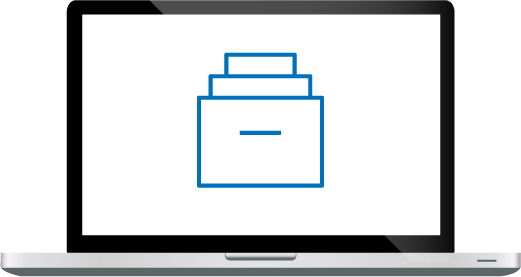Option 1: A SaaS Solution
Most SaaS vendors claim they’re giving you cloud archiving, but what they’re really doing is limiting control of your data and blocking you from many of the best features of cloud archiving. Because SaaS archiving vendors don’t own their own datacenters and host multiple customers in a single, shared cloud, they take a one-size-fits-all approach which impacts security and flexibility. With SaaS archiving, you’ll be forced to compromise on your security policies, have no control over the geographic location of your data or the ability to store it in more than one location. Because your SaaS vendor’s cloud is multi-tenant, you won’t even have access to encryption keys, opening up a whole world of security and compliance concerns. You can’t set specific security policies when it comes to firewalls and third-party vendor checks, and you can’t access your data natively in order to use your own tools for search and analysis. This one-size-fits-all, black box approach to archiving doesn’t move you any closer to the true promise of cloud archiving.
Common issues with SaaS archiving solutions:
- No control over data’s geographic location
- Minimal control over security policies
- No access to encryption keys
- Proprietary formats lock data in a ‘black box’ only accessible by the vendor
- Not compatible with audio and video file formats
- Limited analysis and eDiscovery options
In a recent survey of global IT executives, including VPs, directors and members of the C-suite at major corporations, only 19% of those surveyed believed 75% or more of their SaaS vendors met all of their security requirements. 70% stated they had been forced to make at least one security exception for a SaaS vendor. While many of these organizations are likely using popular SaaS products like Microsoft Office 365 and SalesForce, where the size and standing of the vendor might make the business more amenable to accepting a perceived lower risk, the clear takeaway is that SaaS solutions don’t provide the security standards modern organizations require.
Elsewhere, on the topic of encryption keys, an astounding 95% of respondents believed it was important to control their own encryption keys and 81% were uncomfortable with their SaaS vendors controlling them. However, 74% of those surveyed said they did not control the encryption keys for the majority of their SaaS solutions.
This is a worrying statistic and one that many organizations will have to take steps to reverse as regulations continue to tighten and the threat of cybercrime grows. To that end, 92% of executives said they would need more security customization in the future, with 63% of them planning to retire SaaS applications that didn’t provide them control over encryption keys.
These statistics paint a clear picture of the business security landscape and the risk that the one-size-fits-all approach of SaaS vendors introduces. As the trend for security customization continues and scrutiny over data handling increases, SaaS solutions will become increasingly less palatable for businesses aiming to de-risk their operations and more secure and customizable solutions, such as those in the public cloud, will be sought.
Option 2: Your Own Public Cloud
The only way to ensure complete control over your data and its security, as well as the flexibility to comply with regulations and security policy, is to move to the the real, hyperscale cloud. A public cloud environment, as provided by Microsoft and Amazon, enables you to archive your data in its native format, apply security controls and processes specific to your business, and choose one or multiple locations in which to store your data. In a scalable, flexible environment like this, you can unlock value from your data by using cutting edge analysis tools or invite third-parties to securely carry out services on your behalf, conduct audits, detailed searches and many other activities not possible with SaaS archives. It’s complete control without compromise.
Unlike SaaS or on-premises solutions, the hyperscale cloud provides...
- Access your data in its native format
- Have complete control over security, compliance and privacy
- Enjoy flexibility, scalability and only pay for what you use
- Reduce upfront investment and move to predictable ongoing costs
- Decommission costly legacy infrastructure, freeing up space, resource and the cost of ongoing maintenance
- Faster eDiscovery searches and regulatory control
- Access to cutting edge tools to unlock insight through data analysis
- Achieve the ability to search content within audio, video and social media files








